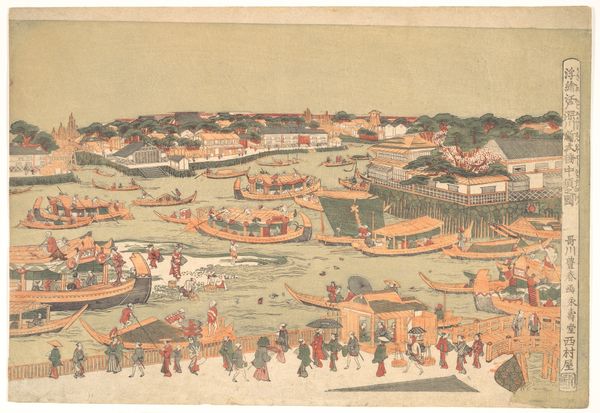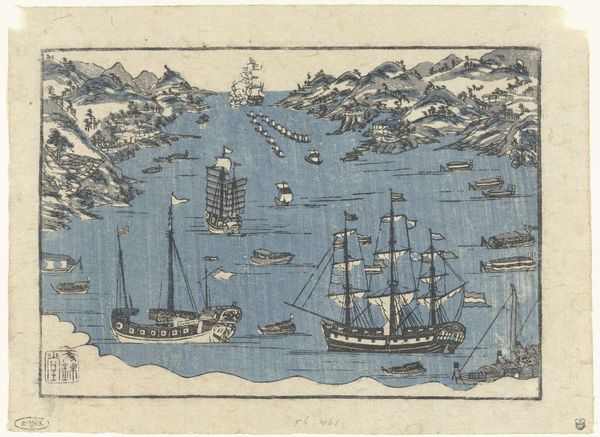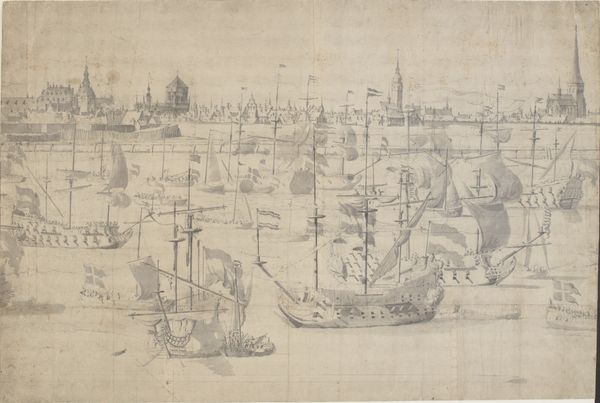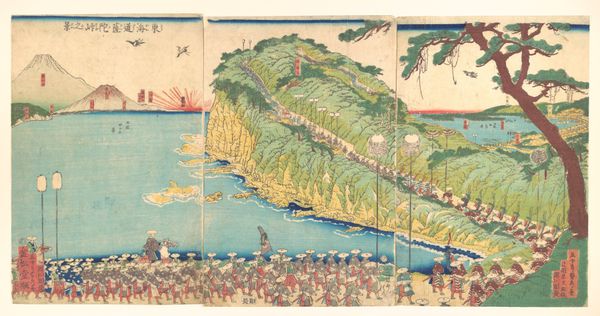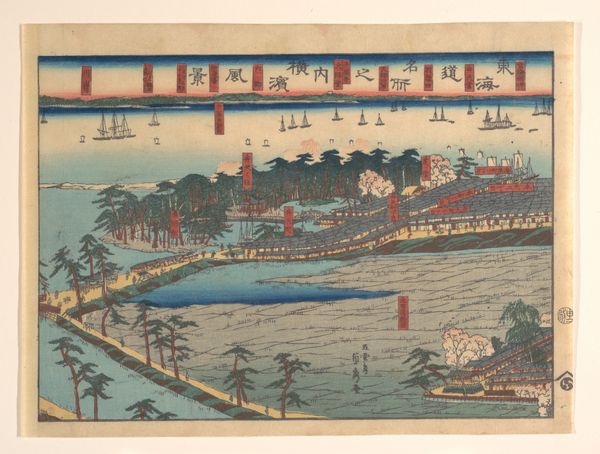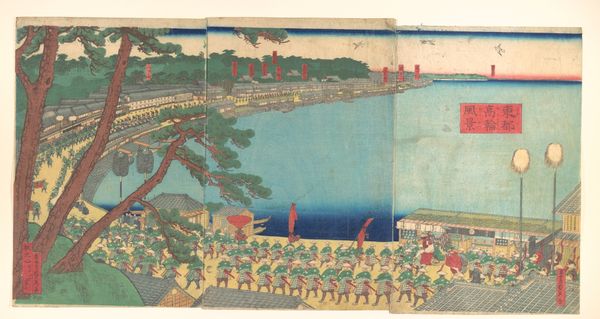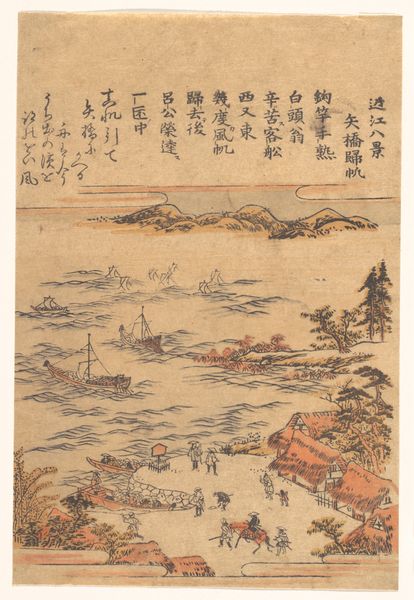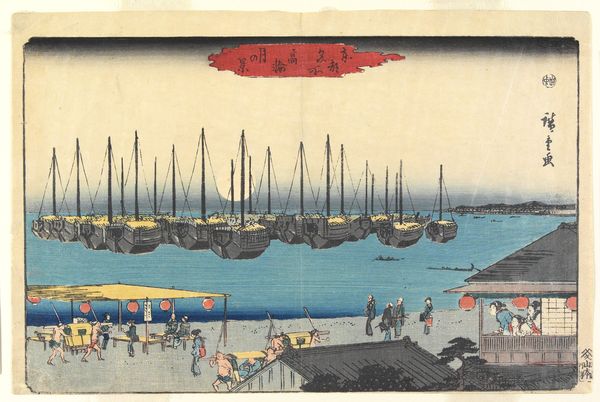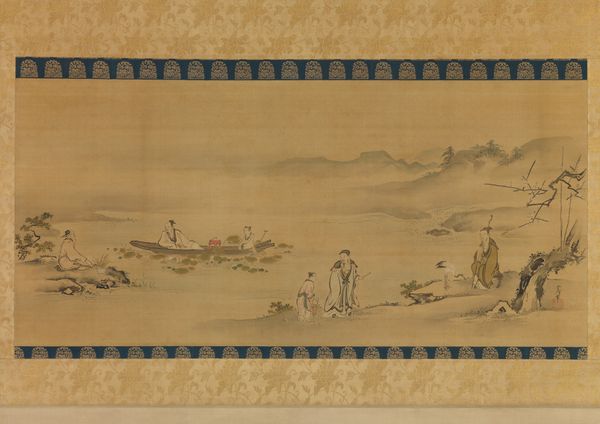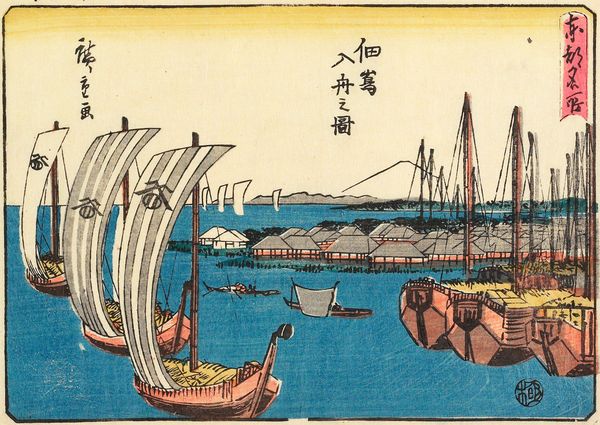
print, woodblock-print
# print
#
asian-art
#
sketch book
#
landscape
#
ukiyo-e
#
japan
#
personal sketchbook
#
woodblock-print
Dimensions: 7 3/4 x 12 1/8 in. (19.7 x 30.8 cm)
Copyright: Public Domain
Editor: Right, so here we have "View of Fukagawa, Edo," a woodblock print made by Suzuki Harunobu sometime between 1754 and 1774. It’s currently at the Met. I’m really drawn to the calmness of this piece – the way the water seems to just stretch on. How do you interpret this work? Curator: Calm, yes, but also meticulously observed, wouldn’t you say? For me, this isn't just a view; it’s a little window into a whole world. Ukiyo-e, as this genre is called, often gave a peek into the pleasure districts and celebrity culture, but Harunobu, bless him, seems to be looking at the everyday rhythm of Edo—now Tokyo. The boats bobbing about... almost dreamlike, eh? I wonder what stories they carry. Do you get a sense of distance too? Editor: I do! It’s subtle. The hazy mountains kind of fade into the sky. How much of this do you think is realistic versus idealized, though? Curator: Ah, the eternal question! I think it is like any landscape tradition a delicate balance. Harunobu captures a real place, for sure; we can see Fukagawa’s waterways, but the way he simplifies, almost abstracts forms? That's the artist showing us how to feel the scene, not just see it. What grabs *you* most about it? Editor: The figures. They’re so small, almost like afterthoughts, but they add a sense of scale and life. It's a reminder of how massive this city actually was, is! Curator: Precisely. You see the heart of it all, you do. It's funny how a simple landscape can make you contemplate life’s bigger currents. Thank you for helping me observe this artwork with a new set of eyes, and perspective! Editor: Thank you! I see so much more in this piece than I initially thought. The personal connection Harunobu seemed to have to the ordinary really comes through.
Comments
No comments
Be the first to comment and join the conversation on the ultimate creative platform.
